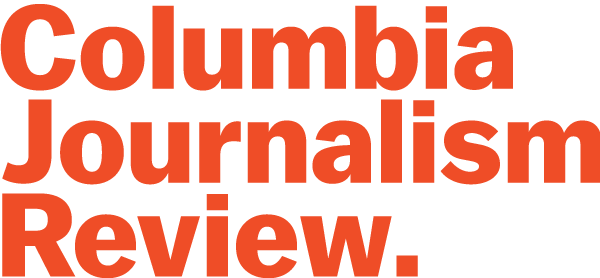Sign up for The Media Today, CJR’s daily newsletter.
When readers started moving to the internet, media analysts thought longform journalism was in trouble. Attention spans were going to shrivel. Readers wanted short, they wanted snappy, they wanted 140 characters and not much more (though a listicle on the side couldn’t hurt). Who would want to scroll through an 8,000-word article on an iPhone screen?
A good number of people, as it turned out. Longform has gone digital and is thriving. BuzzFeed has a longform editor, and longform aggregate website Longreads is partnering with The Atlantic. Stories like The New York Times‘ “Snow Fall” have blended text with sleek visuals and multimedia.
It’s not certain where longform is going, but a conference at Columbia’s Journalism School on Friday attempted to hazard a guess. The Future of Digital Longform, hosted by the school’s Tow Center for Digital Journalism, covered the questions emerging as longform shifts from paper to screen: “Is form following function, or is the medium cannibalizing the message?” “How can you maintain quality control?” And, of course, “How do you make money?”
One point of agreement throughout the day was that longform, though experiencing a new jump in popularity, is not at all a new form of writing. “I think longform is just a new name for feature magazine stories,” said Columbia j-school professor Michael Shapiro, who recently founded the longform website The Big Roundtable. “For me, it’s not an essay, it’s a reported piece of journalism,” he said. “And it’s not defined by its length–it’s defined by its style. It’s all about the writing; it’s all about the voice.”
Shapiro interviewed David Remnick, editor of The New Yorker, who defined longform as “lengthy, relaxed, deeply-reported, literary nonfiction.” He added, “I think it’s fantastic that the first law of evangelical Web theology, that no one would read anything long on the Web, has been overturned thoroughly.”
The internet has let journalists get creative with presentation of longer stories. “The ability to make things look really expensively produced is actually getting cheaper,” remarked Stacy-Marie Ishmael, vice president of communities at the Financial Times. Though just because you can “Snow Fall” an article doesn’t mean you always should, pointed out Jefferson Rabb, The Atavist’s chief technology officer. An editor’s role is also “to determine what helps with comprehension and what is just a distraction,” said Rabb.
“What matters is knowing what matters,” agreed Srinija Srinivasan, one of the first employees at Yahoo and its former editor in chief. “The glut, the variety of stuff coming at us is accelerating more rapidly than ever before. It’s a very simple matter: Be useful. In order to be useful, you often need way more than the soundbyte [where] you can only be salacious, you can only be misleading, you can only be kind of cheap-shot.”
To stand out among the online media outlets clamoring for attention, it helps to be recognizable–which brought up a certain controversial buzzword. “I quake at the word ‘brand,'” said Remnick, “Because I’m vain enough to think that The New Yorker in any form is not a can of soup. But I know what it means, and I’m responsible for that.” After bringing up personal branding in the first panel, Ishmael also flinched. “That’s a horrible term,” she said. “Outside of the world of the writerly and the literary, very few people care about bylines. The byline is almost immaterial,” she argued.
Her tell-it-like-it-is approach extended to long-form’s audience. “If you don’t want to pay for something, expect that there’ll be advertising on it, because those people have to eat,” said Ishmael flatly. “Advertising continues to be the main way the journalists get paid.” Either readers pay up front, she pointed out, or they’ll pay indirectly by being bombarded with ads.
During a panel on money, founders of media startups shared their experiences (and experiments) with fundraising. Joshuah Bearman, who mentioned casually that the screenplay for the movie Argo was based on an article he wrote for Wired, hopes to continue collaborating with the entertainment industry; he hasn’t yet made any money from his startup Epic Magazine, a publication he founded with support from Medium.
The meager pay seemed like a constant across the panel. Noah Rosenberg, the founder of Narratively, admitted that though the site does pay writers for stories, it isn’t “nearly as much as I would like.” Pay raises are the eventual goal, as Narratively collects revenue from ads, content syndication, and clients like General Electric that pay the company to create sponsored content. Shapiro’s Big Roundtable banks on direct donations from readers to writers, but is looking–with some trepidation–at other methods of fundraising. “I find myself having so little context about how to make decisions, just trying to keep publication going day by day,” Shapiro confessed.
Drifting from the topic of longform, Shapiro’s interview of Remnick landed on the process of writing itself. “The people that I’m interested in, whether to hire or to read, are obsessed,” Remnick told Shapiro. “This is not a normal activity. Writing, to do it well, is horribly difficult. It breaks people in half sometimes. I don’t recommend it. But all those things said, there’s no greater pleasure.”
“I work with a lot of writers who find writing to be hell,” he continued. “I find it to be, even when it’s going badly, a sublime experience. Because you are alone, and you are in confrontation with the best you can do. There’s nothing banal about it unless you’re banal. So it’s an enormous test. When you have the opportunity, where no one is setting the limits of you and your own talent and your own sense of enterprise and originality–I don’t know what’s better than that.”
Has America ever needed a media defender more than now? Help us by joining CJR today.


